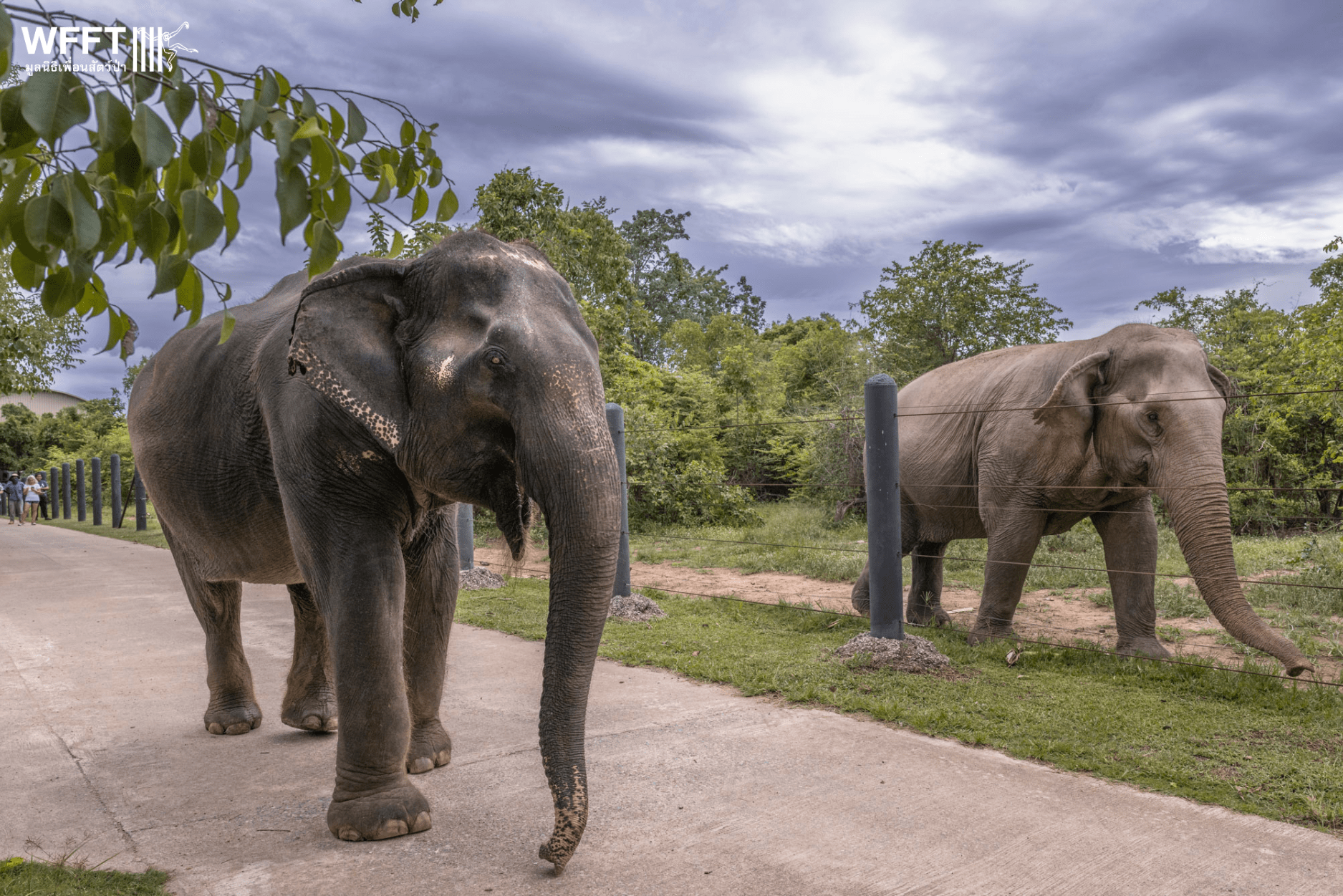It is with enormous sadness that we announce the passing of our beloved elephant, Boon Chuey.
Elephants for tourism; THE DAMAGE DONE
The story of “Kanchana” a wild elephant caught and killed for tourism
all photos on this page COPYRIGHT WFFT
“in memory of Kanchana and those never stood a chance”
The story of Kanchana, a wild elephant poached from the wild, captured and tortured destined to entertain foreign tourists to Thailand. An elephant that died in captivity together with her baby that was “made in the wild” but had to die chained up due to human greed and ignorance.
“Kanchana” was born in the wild somewhere in 1991 in a Thai forest on the border with Burma in Kanchanaburi province. It is not normal for wild elephants to have a name, but as her life changed so much due to humans we decided to call her Kanchana, after the province where she was born. To be honest, we probably would have never known about Kanchana, nor her fate, if one elephant trader from the elephant village in Surin province wouldn’t had invited on of the WFFT informants on his trip to the border to buy a wild elephant to take to an elephant camp for tourists. But the story of Kanchana’s capture, the breaking of her spirit and our fight to get her confiscated and send back to the wild started in a horrific way and we never thought it would after all end the way it did.
The story of Kanchana’s capture started for us on the 6th of December 2008, as our founder Edwin Wiek received news that a group of elephant owners were traveling from Surin province to Kanchanaburi to go and view a few “new “ elephants for sale in Sai Yoke and Sangkhlaburi districts, normally not really a reason to get too excited, however within this group a few people were seen by WFFT that had previously been involved with illegal elephant possession and trade, with strong ties to big elephant camps in Kanchanaburi, Ayutthaya and Huahin with powerful connections. One of WFFT long-term informants joined this group after being invited by one of the “nai thoon” or investors, the people that usually pay cash upfront to poachers and illegal traders and sell on the elephants to others with a financing scheme.
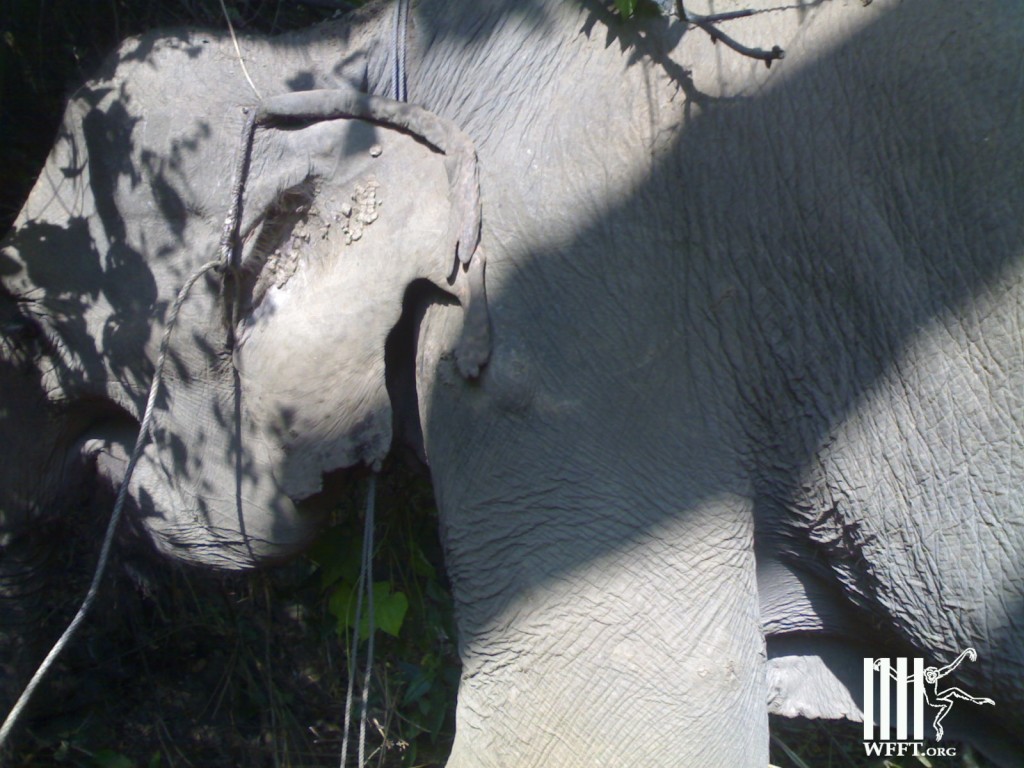
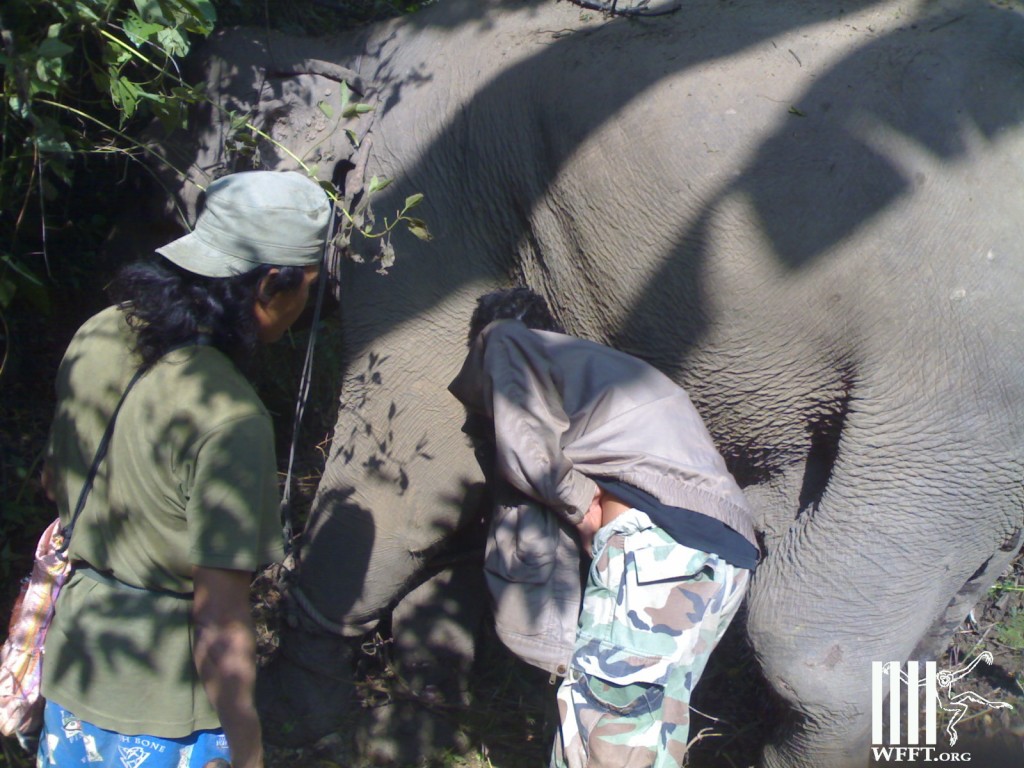
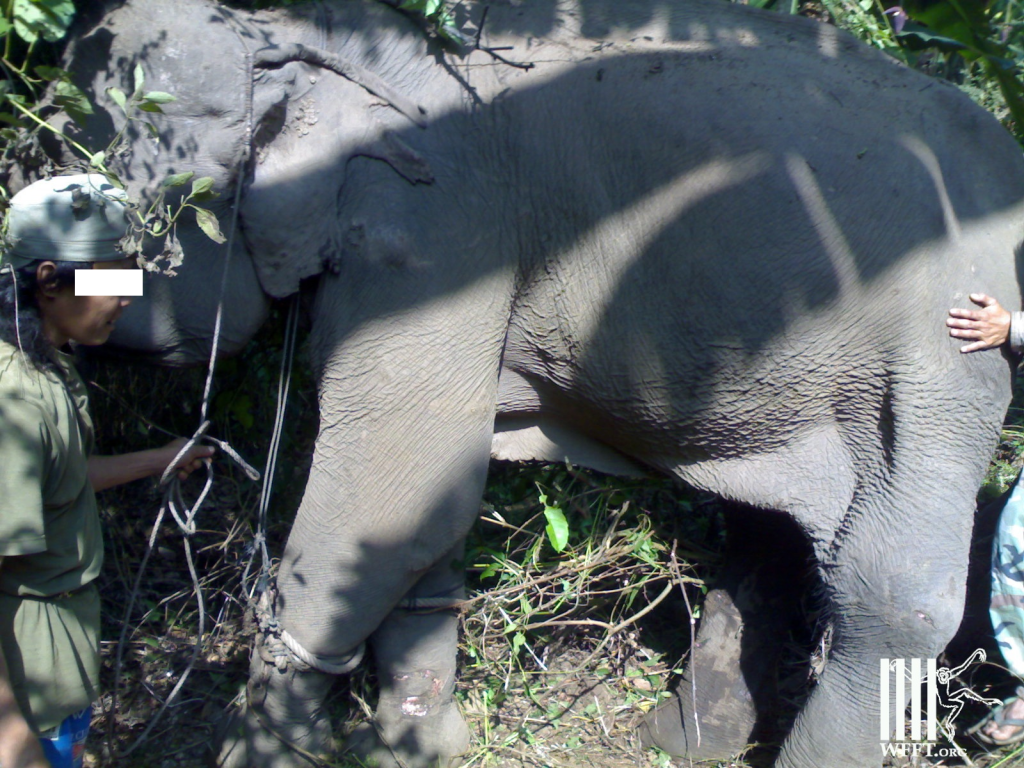
On the 8th of December the group arrived in Sangkhlaburi near the Burmese border and met up with Thai and Karen villagers to check on the newly arrived elephants, with 3 baby elephants for sale and one older female that was only caught that same week (see pictures of captured Kanchana above here). The babies were sold off easily as they are in high demand in the tourism camps to perform tricks, however for Kanchana there was not immediately a buyer, as she sustained many visible large wounds during her capture and even broke a hind leg. She was however pregnant according to the poachers and therefore on long-term a good investment for any trader as her baby would bring in at least a million baht if it was female. Mr S. ,an elephant trader from the elephant village in Surin decided to buy Kanchana and paid an installment of 100,000 baht.
S. still had to pay another 100,000 baht and returned to Surin to try and find the balance and in the meantime visited the district office in Kanchanaburi city to ask for legal paperwork for the elephant, something that is under normal circumstances impossible as an elephant older than 10 years (Kanchana was estimated to be 19-20 years old) cannot be registered as captive bred. WFFT tried to get to Kanchana but right after the visit of the group she was moved to an undisclosed location to be “trained” before moving her to an elephant camp in Huahin, awaiting “legal documents”. Informants picked up news that she was being kept somewhere in Sai Yoke district and was not eating well as she suffered serious infections to her wounds.
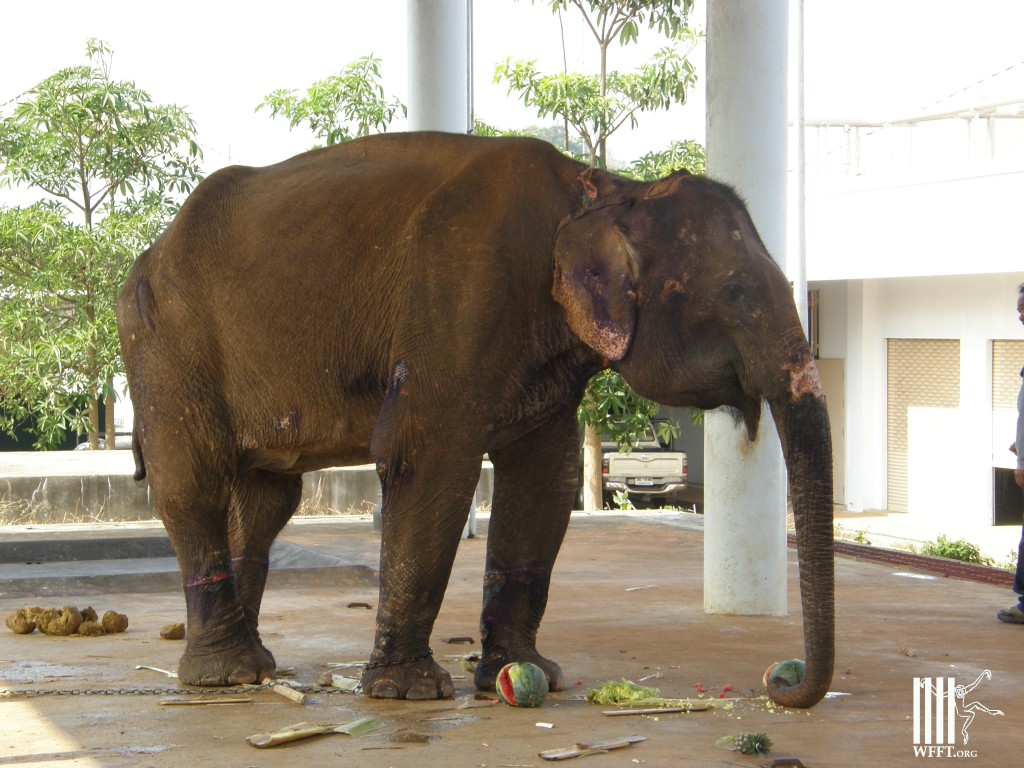
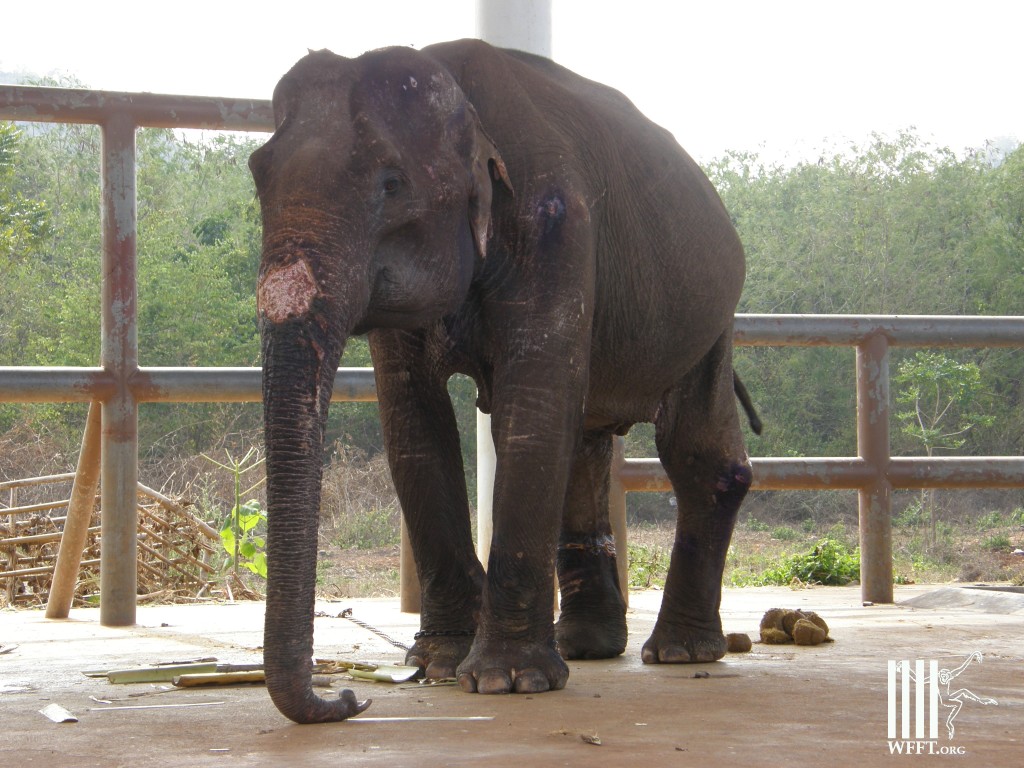
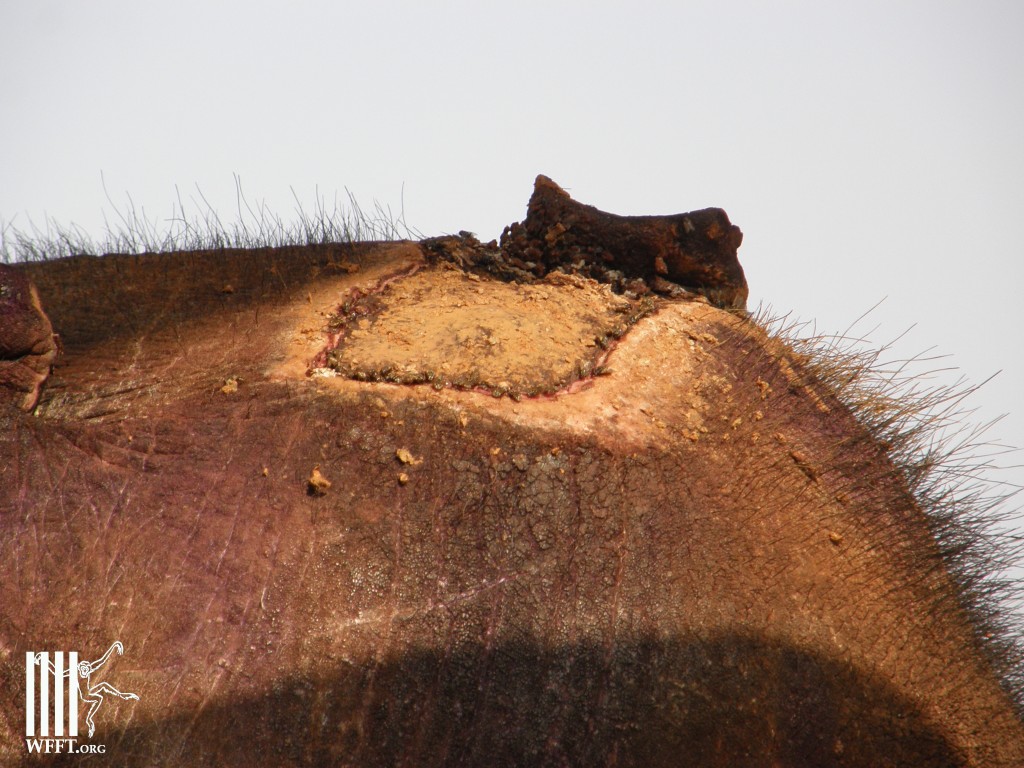
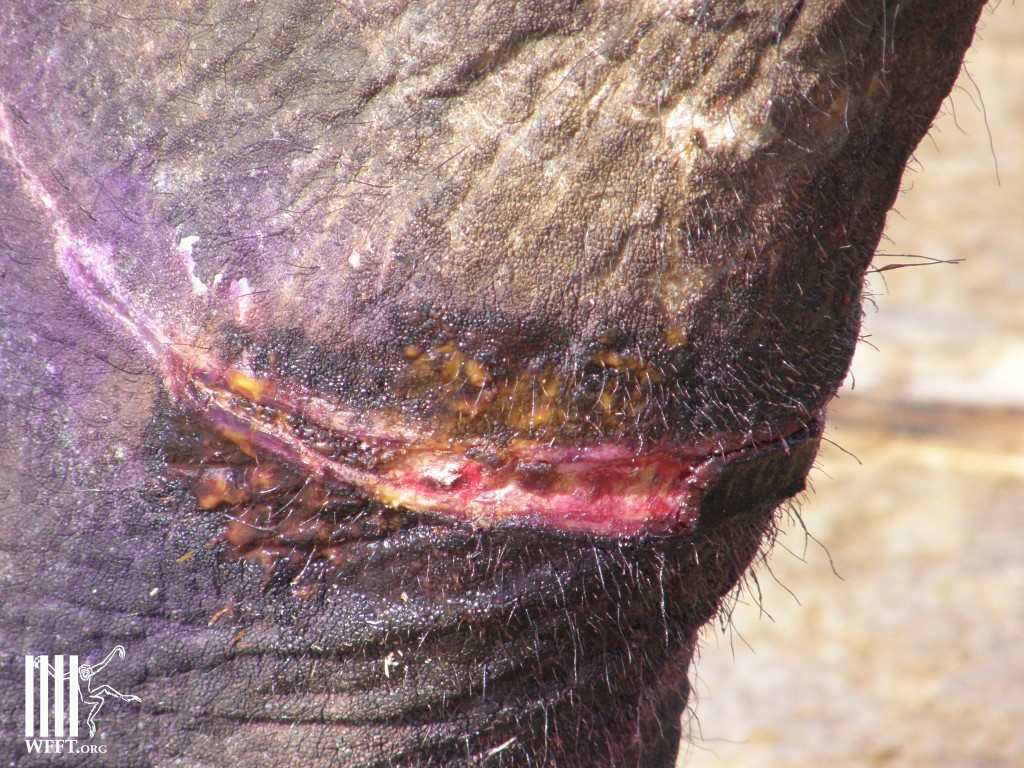
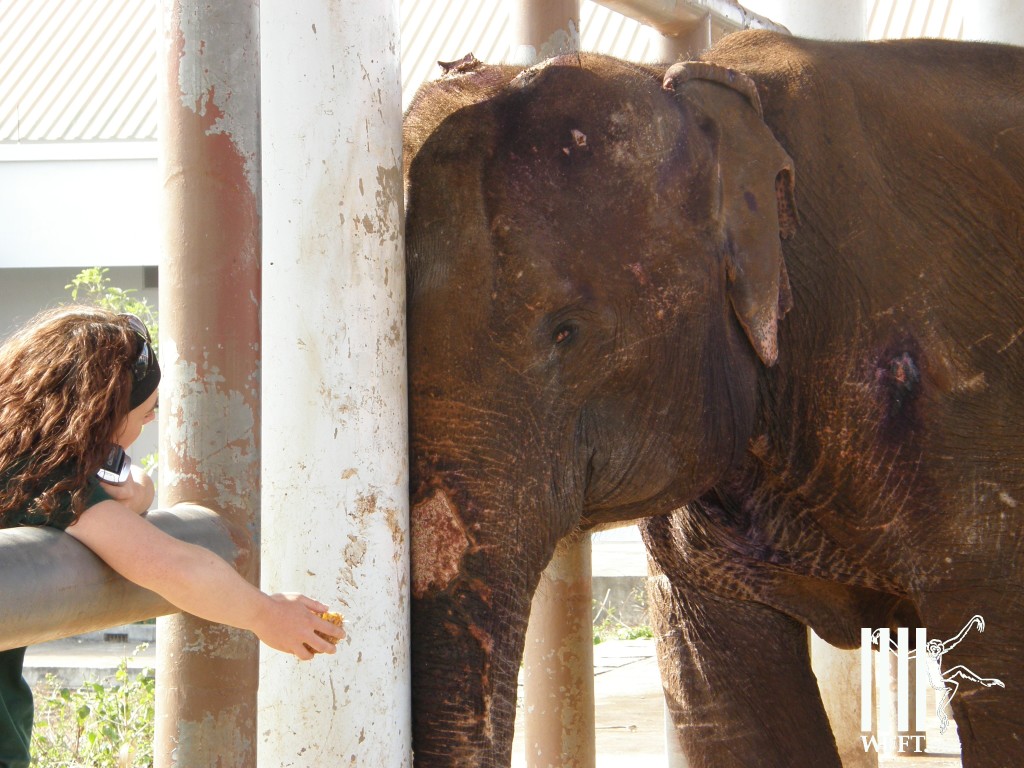
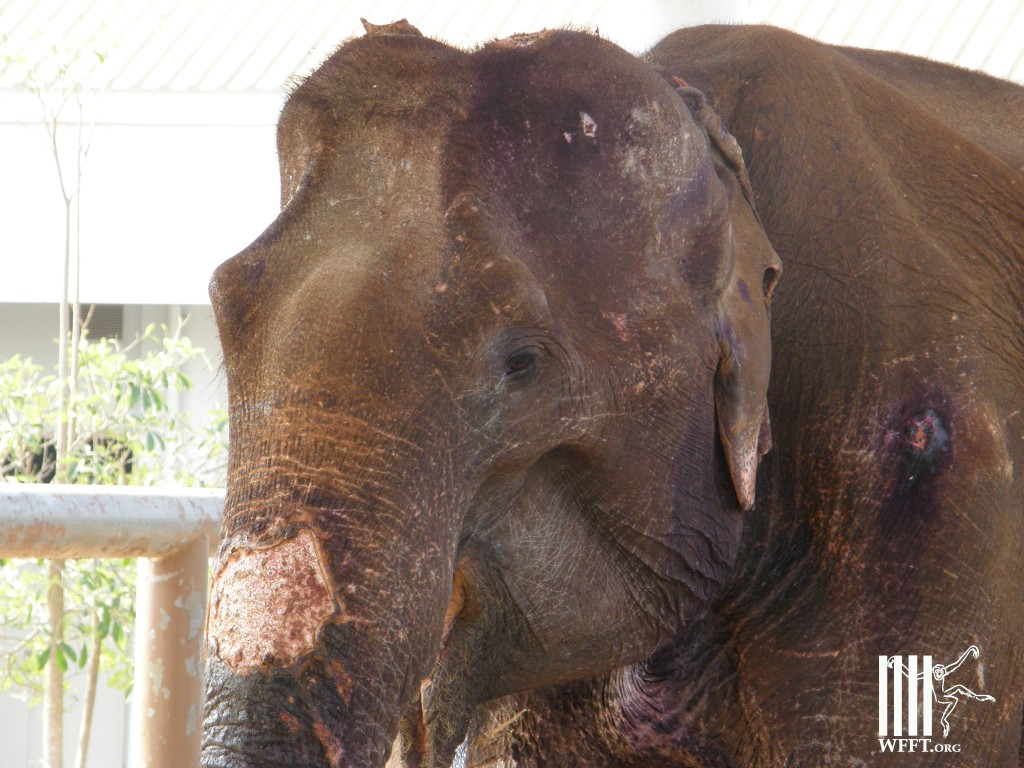
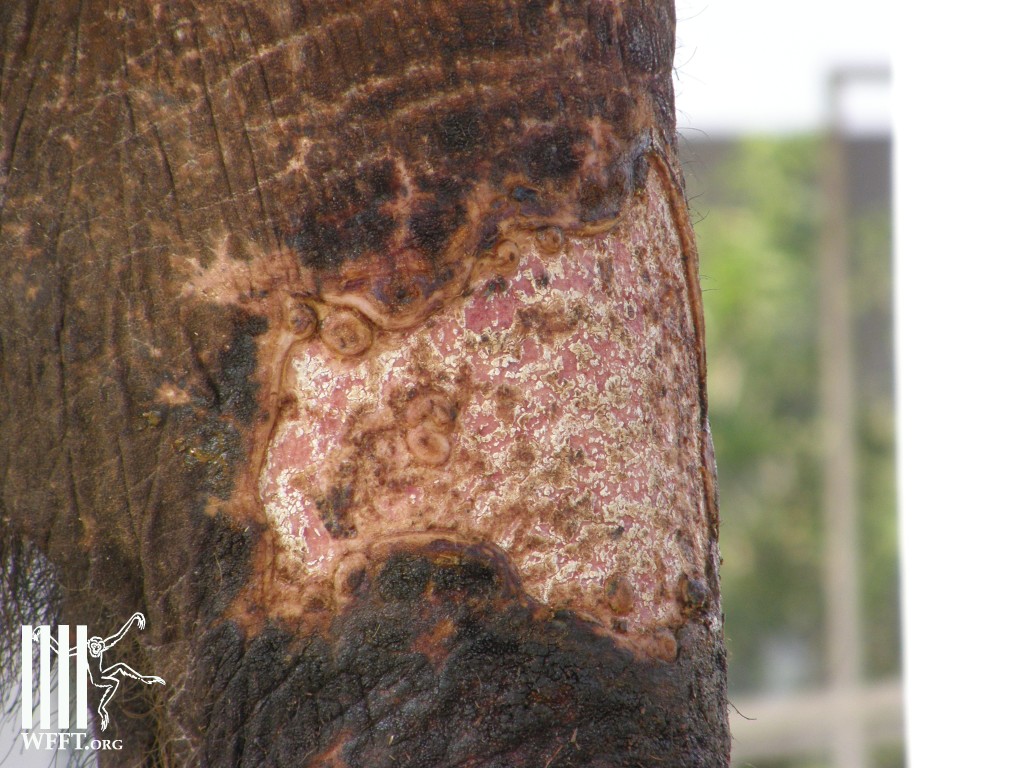
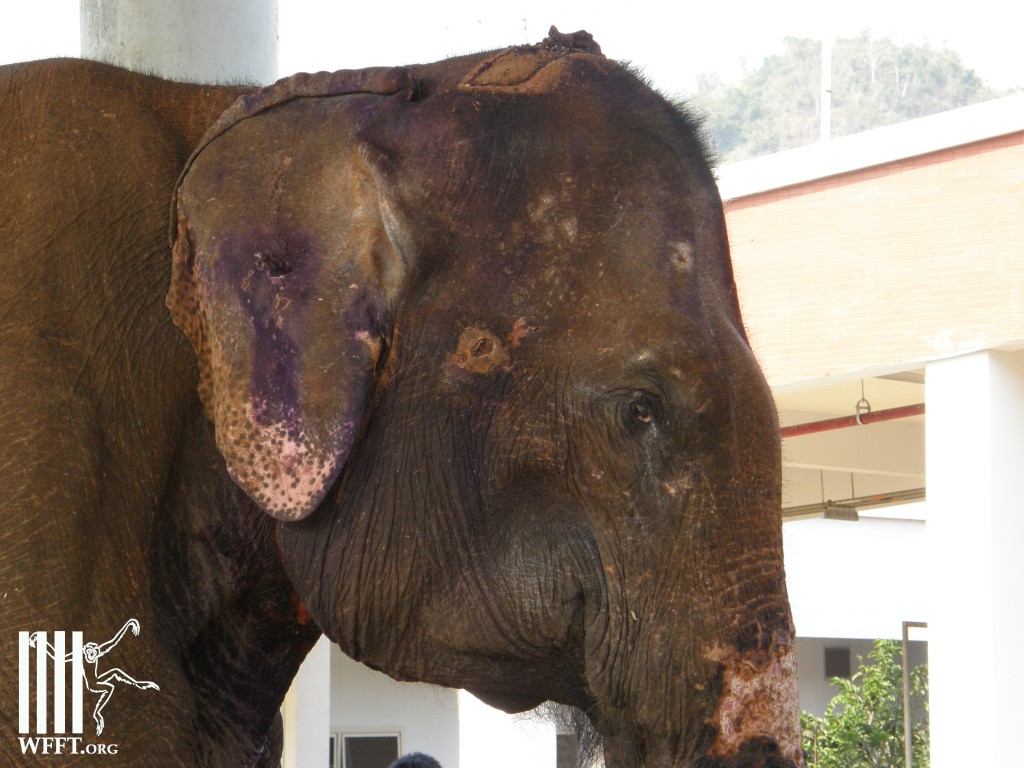
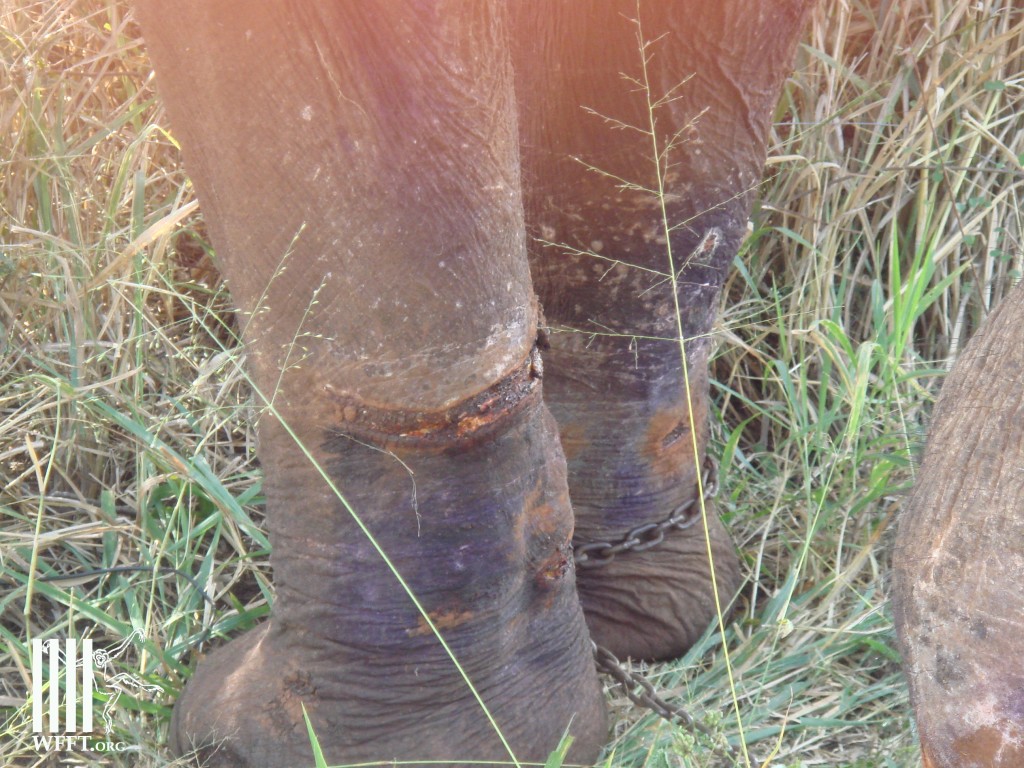
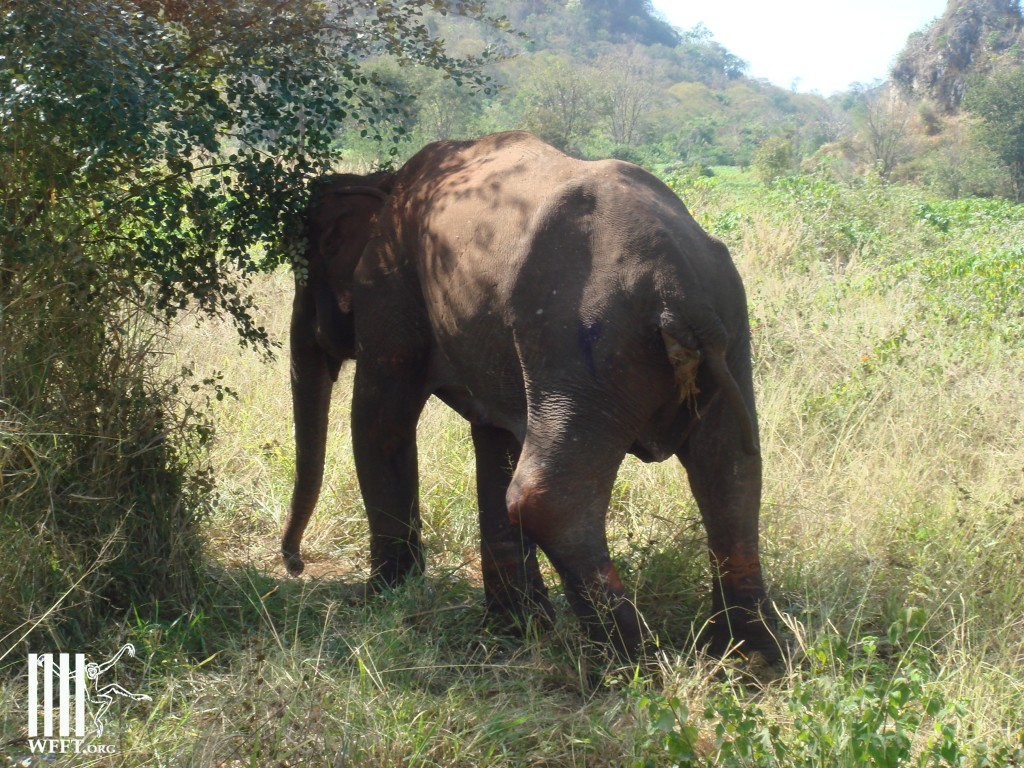
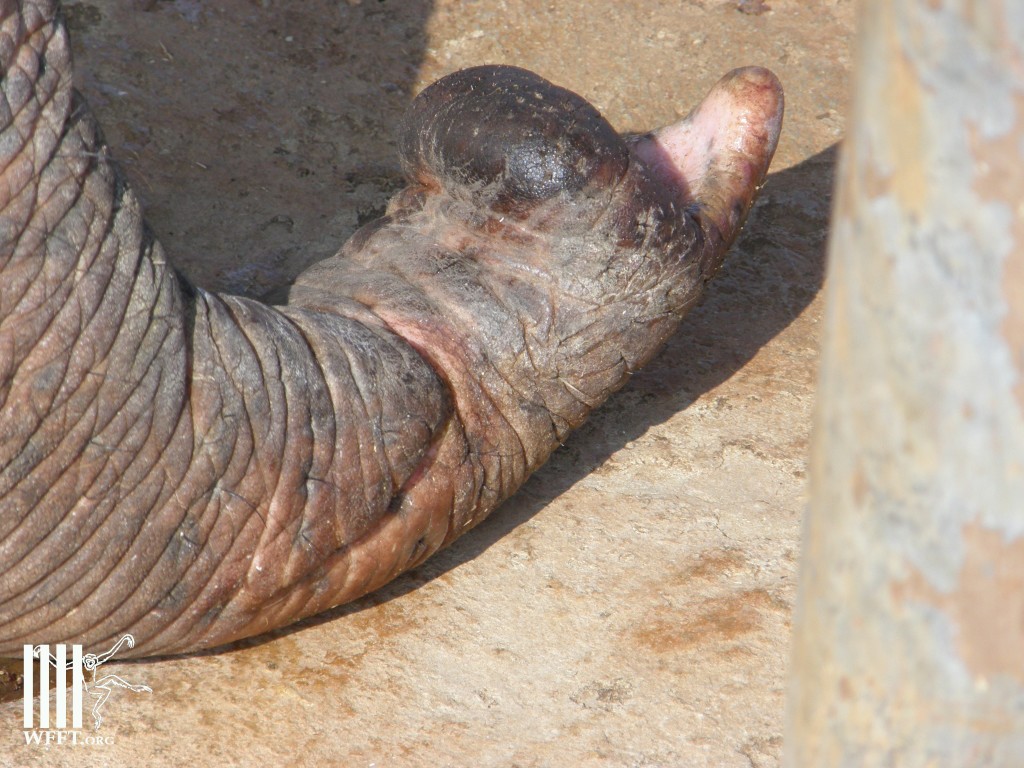
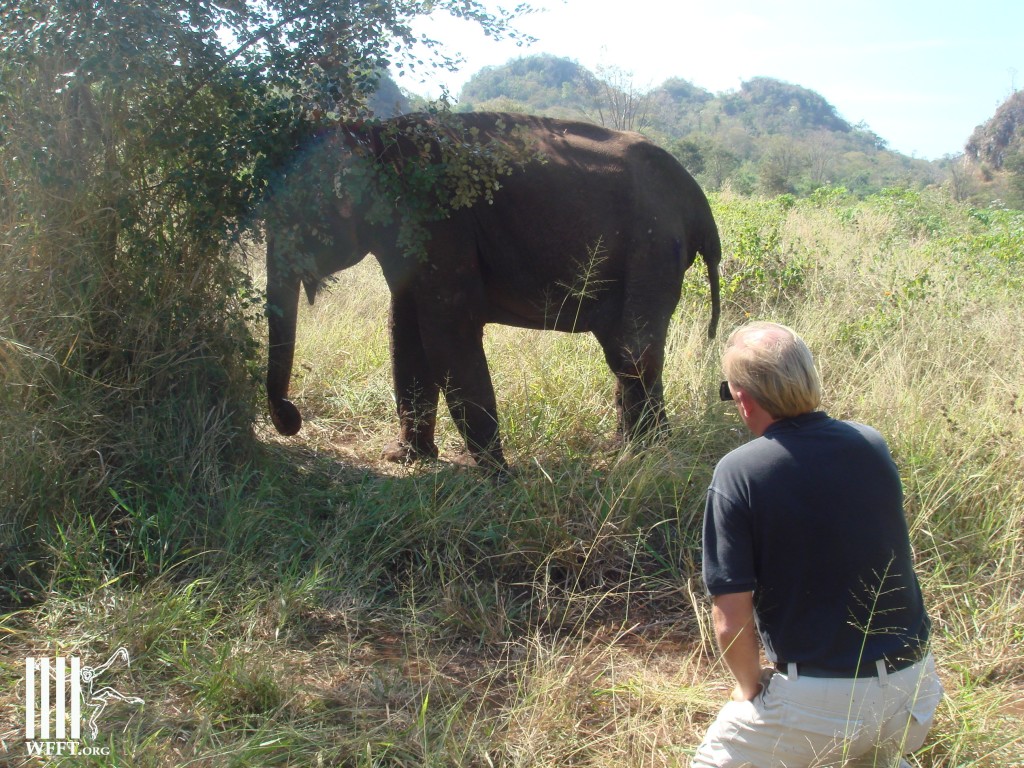
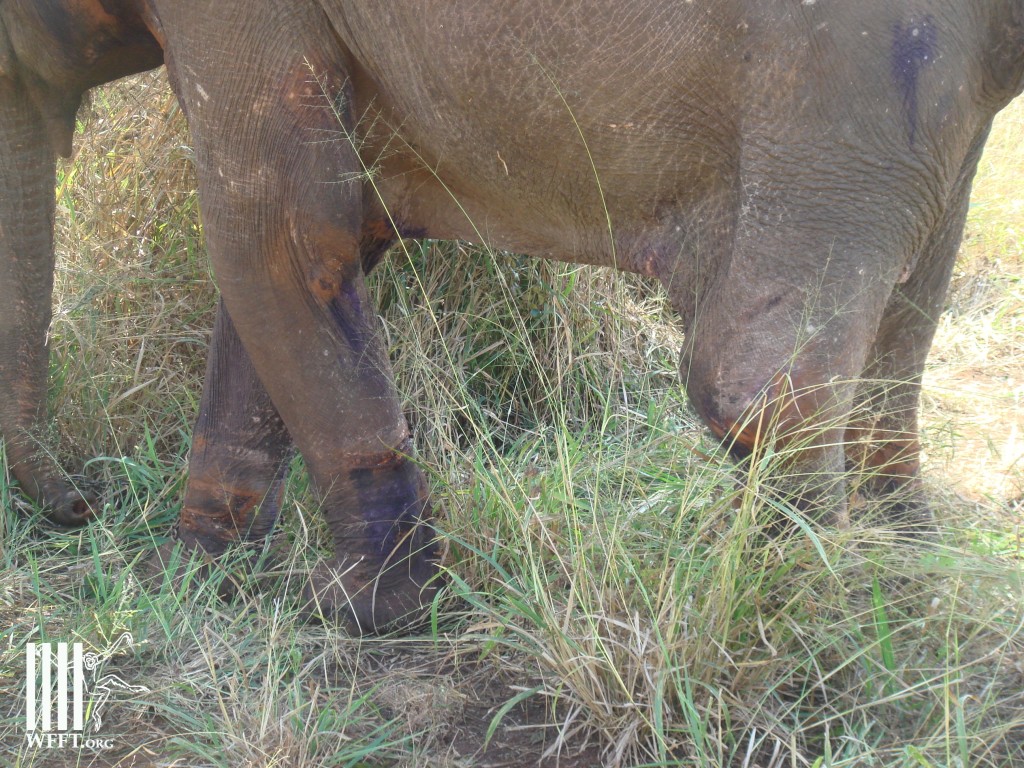
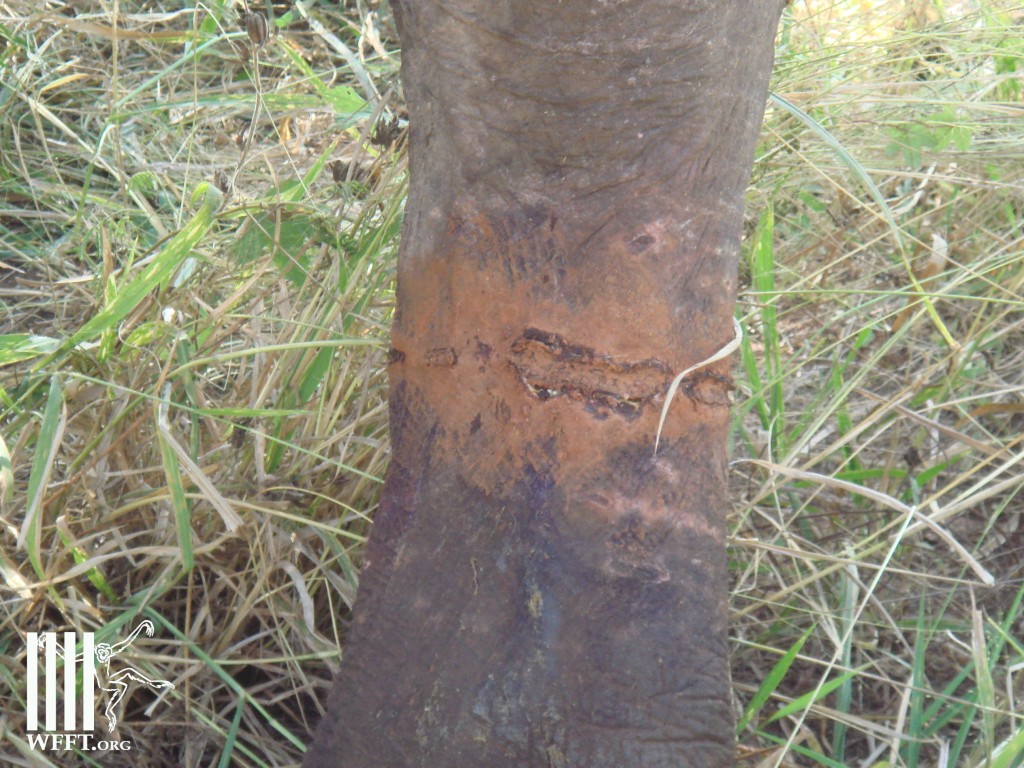
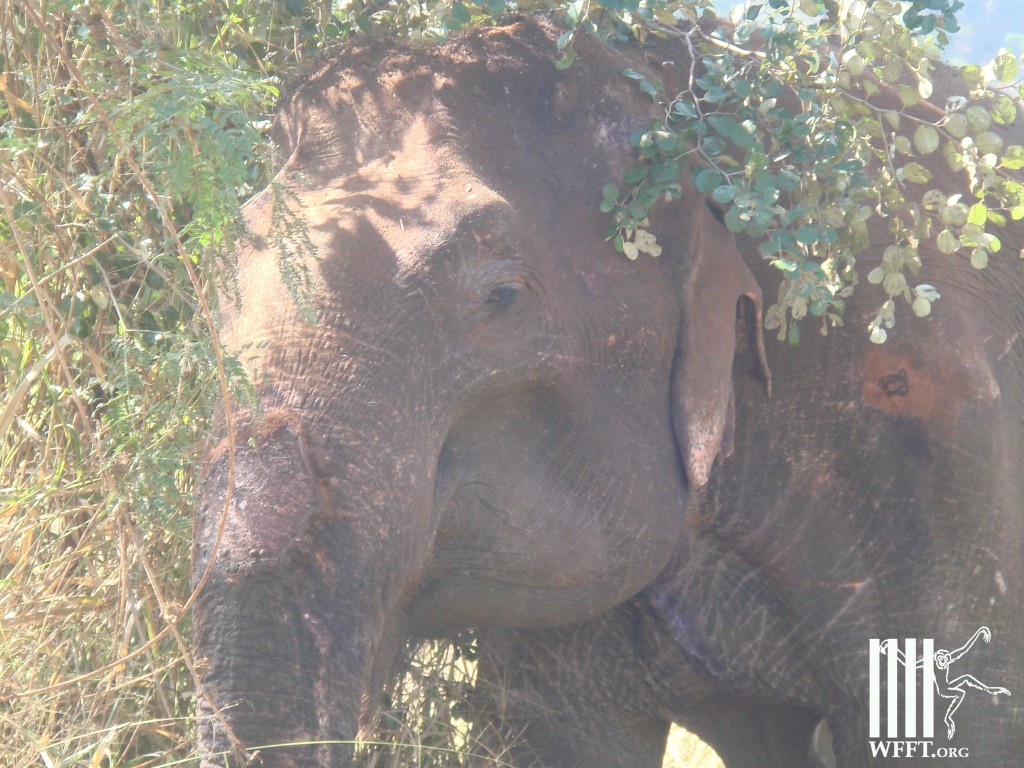
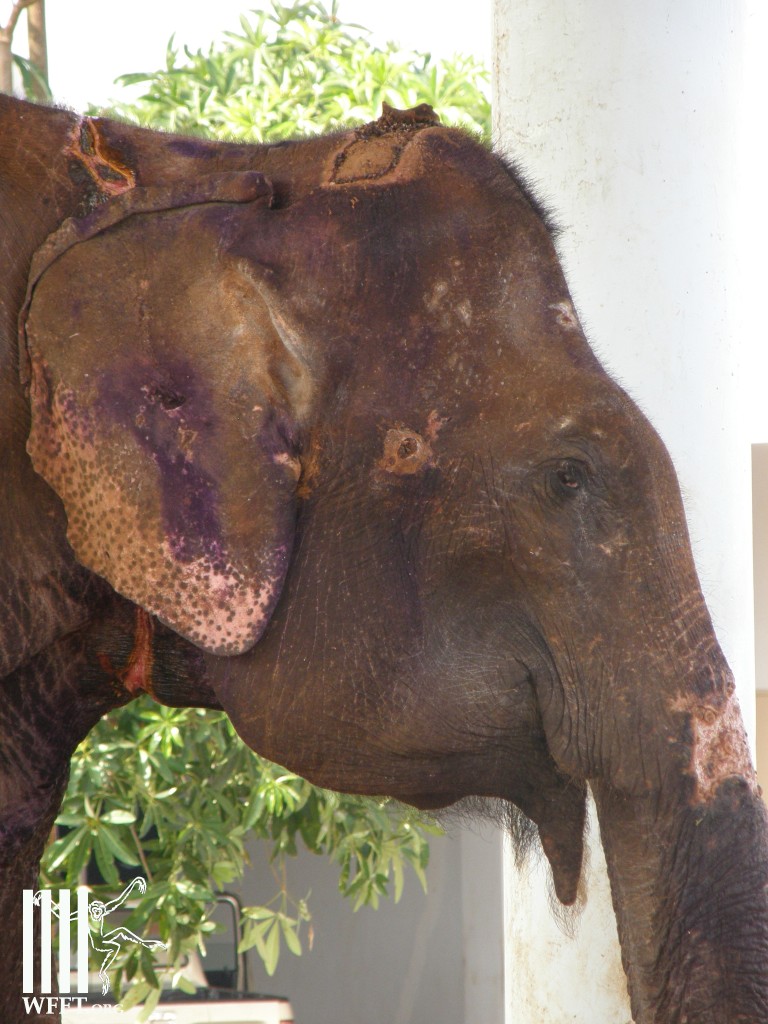
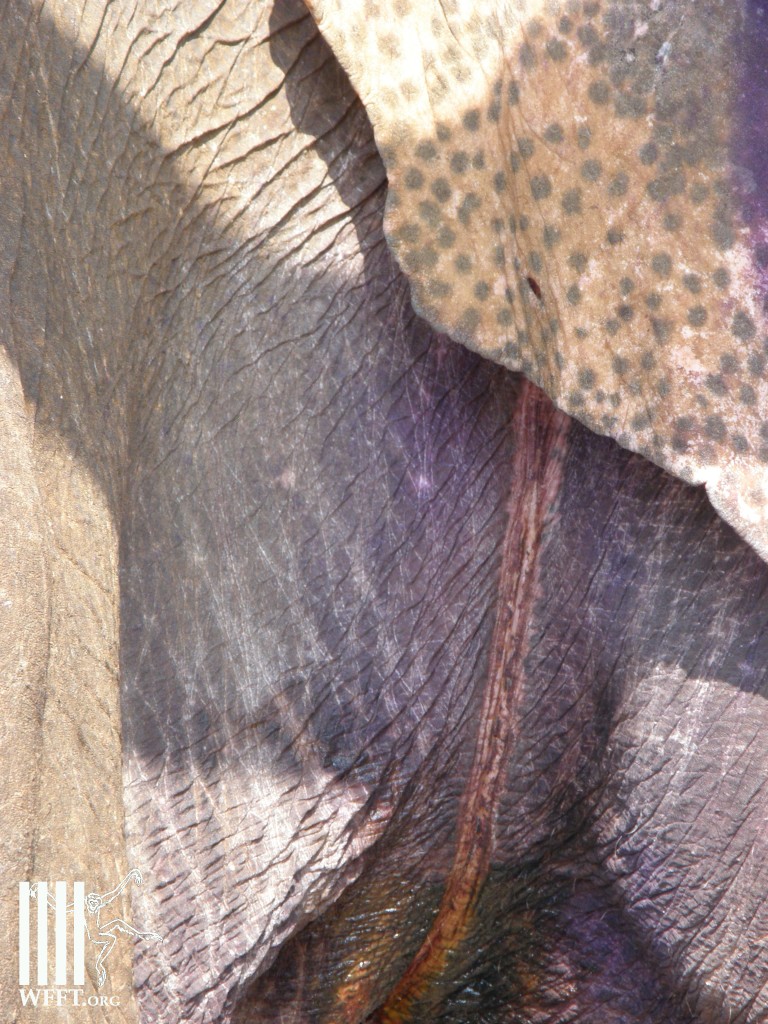
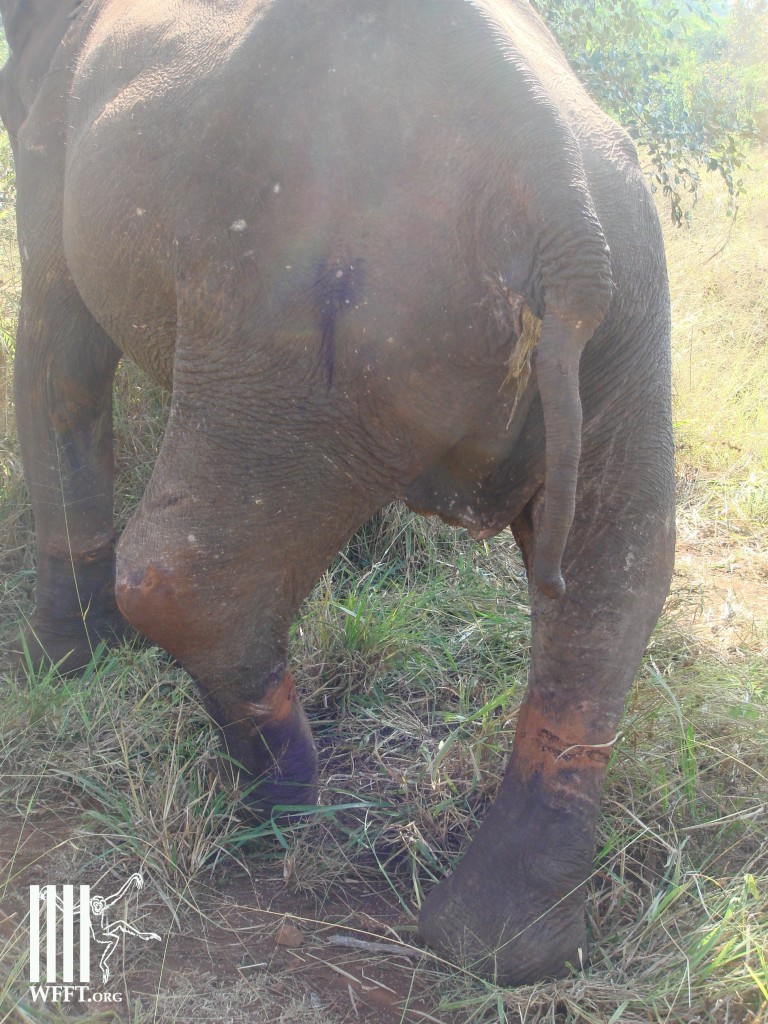
It was about 2 weeks later until we suddenly received news on the whereabouts of Kanchana, just before Christmas day we heard that she was about to be moved to an elephant camp in Huahin (where only a few months earlier a tiny illegally caught baby elephant was confiscated) even though she was in a by then horrific physical shape. News too came to us that she had now been legally registered by the Kanchanaburi district office, something we at first could not believe as she was too old to be registered and had no other supporting documents to justify this under any other reason. Edwin met up with Roger Lohanan of the Thai AGA, a leading animal welfare NGO in Thailand, and invited him to join the investigation into the paperwork on Kanchana, what we considered “laundering of protected wildlife”, on our trip to the district office we found that Kanchana was indeed given legal registration documents by the district office and Edwin and Roger immediately visited the provincial governor to investigate the issue and cancel all legal ownership documents. The governor was shocked of the allegations and promised to investigate.
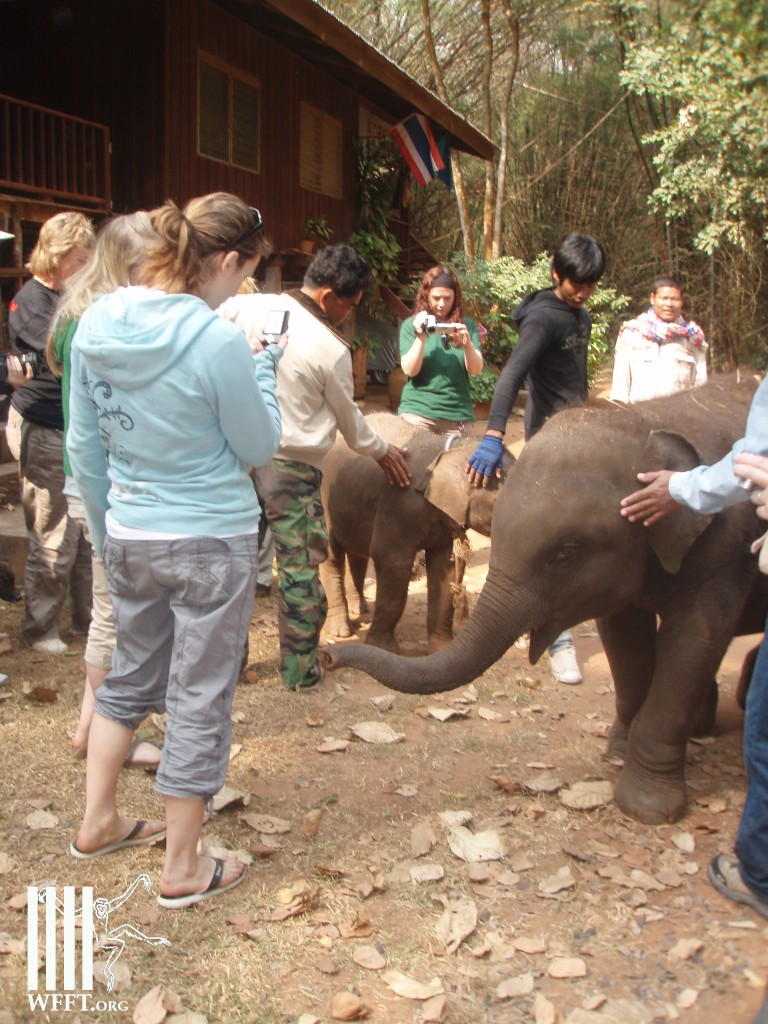
On this same day military officers stopped Kanchana at a military checkpoint and a livestock veterinarian checked on her health and ordered her to be confined to a holding place to first strengthen up before moving her any further. Within another 2 days the Kanchanaburi governor called us for another meeting and told us that he had found the whole process to be illegal and he would order to cancel the paperwork. We still had one more problem, the cancellation of the paperwork was not going to be quickly taken care off and we wanted the period for recovery to be longer, so WFFT had to send a complaint letter and report to the Department of National Parks, by now it was almost the end of the year and all government offices would close down for a long weekend. Edwin and Noi summed up all evidence and send a very urgent letter to the Director-general of the DNP to confiscate, at least temporary, the poor elephant before it could be moved away for ever. On the 30th of December we received news from the office of the DNP director-general that he had ordered the immediate investigation and confiscation of Kanchana. Due to bureaucracy it took a few months up to the 26th of March until the ownership papers were withdrawn…
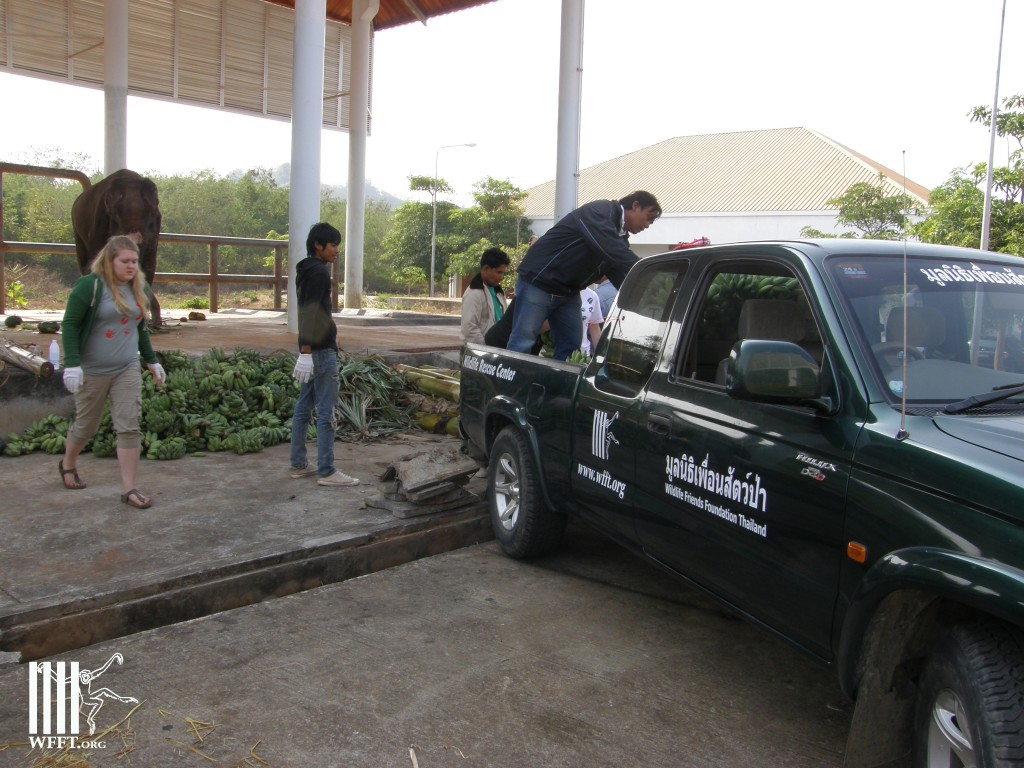
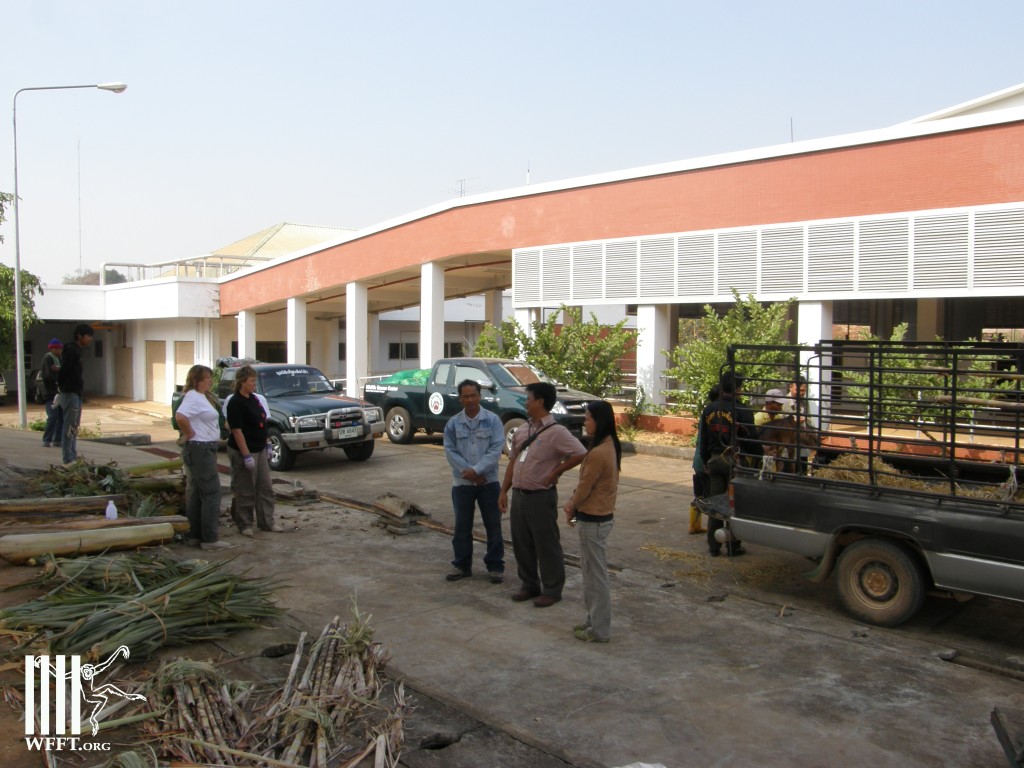

WFFT tried everything we could to have Kanchana moved away from the Mahidol clinic in Sai Yoke where she was kept from December 2008 onwards. As a wild elephant she was very stressed being chained up against a cement pole and she could not get used to the food that was given to her, as wild elephants don’t eat pineapple plants as a main dish. We felt it would have been in her best interest to be able to roam free and strengthen up before release back to the wild, instead she was kept chained up foe almost 18 months. In March 2010 Kanchana gave birth to a calf that died within minutes after her birth, Kanchana herself died not long after that, still weak from the infected wounds from capture so long after and weakened by stress of losing her baby and the daily dealing with being chained up for the “rest” of her life. Kanchana died in vain.
The smallest baby elephant (picture above) was kept at Kao Prathapchang wildlife breeding center of the Department of National Parks in Ratchaburi and was killed by a tiger at this center. The calf had smelled the tiger and did put its trunk inside the cage of the tiger when keepers were not watching. The calf died a few hours later from the severe wounds and blood-loss. The larger elephant calf that was also kept there died to cause unknown to us.
The people that were arrested with all three elephants mentioned in this story were never punished for the poaching, the illegal possession, nor the torture of the elephants shown. They all still operate their business as elephant owners in tourist camps, as if nothing ever happened. The illegal issuing of the documents for Kanchana was never officially checked upon, nor was the law ever amended since to close this loophole.
Please remember Kanchana’s story, she did never make it to the elephant camps and never had to make the walks with tourists on her back, but so many other elephants did make it from the wild into the camps, going through this or similar capture methods, having their spirits broken by several days long torture and pain, just so that some day some tourist can enjoy the ride on an elephant. Once these elephants are in the camp you might thing that it doesn’t matter any longer as the damage has been done, but please remember that elephants never forget, they do not forget the pain, the torture, but most of all they will never forget where they came from and will forever miss their herd, their home, the forest!
Your visit to these elephant camps, the money you pay for a ride on an elephant doesn’t support the elephants nor does it keep working elephants off the streets. The money you pay sustains the poaching, the trade and torture of elephants that came from the wild and belong just there, in the wild…
Publishing this story makes me feel that Kanchana might not have suffered and died completely in vain.
all photos on this page COPYRIGHT EDWIN WIEK/WFFT



